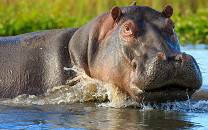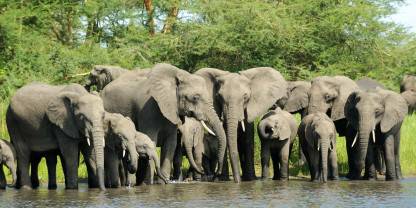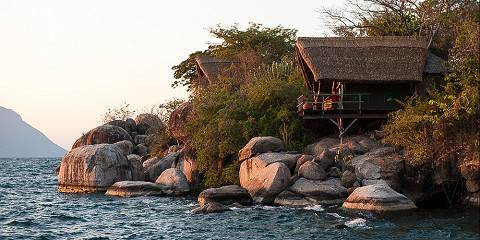Liwonde National Park is an outstanding Big Five safari destination dominated by the atmospheric Shire River. Boat trips are a highlight. You can expect to see large numbers of elephant, hippo and crocodile, along with a spectacular variety of birds. Managed by the NGO African Parks since 2015, Liwonde now forms part of a 903km²/349mi² fenced-off wilderness area that also incorporates Mangochi Forest Reserve.

-
Best Time To Go
- July to October (Dry bush; animals are easy to find)
-
High Season
- July to October (The park is busy; rates are higher)
-
Size
- 545km² / 210mi² (903km² / 349mi² including Mangochi FR)
-
Altitude
-
473-783m /1,552-2,569ft
 View Photos
View Photos
 View Photos
+24
Photos
View Photos
+24
Photos
Pros & Cons
- Unforgettable boat safaris on the Shire River
- Home to the Big Five, as well as cheetah and African wild dog
- Superb birding with several local specials
- Beautiful scenery and river views
- Night drives and are available
- Tsetse flies can be a nuisance in areas of thick woodland
- Black rhino and leopard, though present, are difficult to see
Wildlife
Under African Parks’ management, Liwonde has been fenced in its entirety and poaching has been brought under control. In addition, several key species have been reintroduced, notably lion, cheetah, black rhino and African wild dog. As a result, four of the Big Five are now definitely resident in Liwonde. The ambiguous exception is leopard, which inhabit neighboring Mangochi and presumably stray across the park boundary on occasion. Elephant are common around the Shire River, which also teems with hippo and crocodile.
More about Liwonde’s wildlifeScenery
Liwonde is a very scenic park, with the Shire River its focal point. Big, lush swampy areas with , fever trees and giant baobabs fringe the river to give it that real heart-of-Africa wilderness appeal. Impala lilies bring bursts of color to the dry interior for most of the year, and an array of wildflowers is plentiful during the rainy season.
Activities
A must-do activity in Liwonde is a boat trip on the Shire River. This is one of Africa’s most atmospheric waterways, thanks to its lush tropical fringing vegetation and an abundance of hippos and waterbirds. Particularly in the afternoon, you can expect to see large numbers of elephant along the river, while bushpigs are occasionally encountered on morning outings. Lion, and to a lesser extent cheetah and black rhino, might be seen on early morning and night , while are great for birds and other smaller creatures.
Weather & Climate
Although the climate is quite hot throughout the year, Liwonde experiences a defined Dry season (May to October) and Wet season (November to April). The Dry season months are cooler overall, though temperatures spike in October just before the rains start in earnest. December to March are the wettest months; expect daily downpours. At this time, roads deteriorate. By the end of the rains, a boat shuttle might be the only way to reach the camp.
More about the weather and climateBest Time To Visit
The middle and end of the Dry season, from July to October, offers the best wildlife viewing. During these months, animals are easier to spot as they are drawn to the river and other water sources. This is especially the case toward the end of the Dry season (though October can be unbearably hot). The lush ‘Emerald season’, known as the Wet season (November to April), has its own appeal, especially for keen bird-watchers. However, roads can be hard to navigate at this time.
More about the best time to visit



